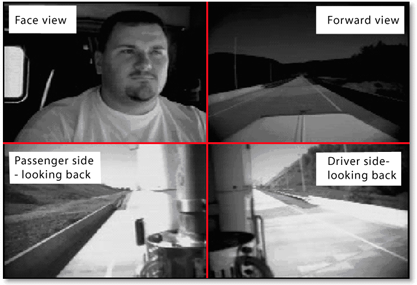|
Because "driver error" is a primary contributing factor in large-truck crashes, the Commercial Motor Vehicle (CMV) web-based driving tips project was developed to provide defensive driving safety information to CMV drivers. Several studies, including many conducted by FMCSA-VTTI, identified specific driver behavior and performance errors, or "error categories." For example, the 2002 Large Truck Crash Causation Study (LTCCS) results assigned the critical reason to large trucks in 55 percent of the crashes studied and to driver errors in 87 percent of the cases. The 2005 Drowsy Driver Warning System Field Operational Test (DDWS FOT) results assigned the critical reason to large trucks in 71 percent of safety-critical events and to driver errors in 57.9 percent of safety-critical events. The LTCCS critical event framework was used as a basis for the error categories in this project.
Driving tips relating to each error category were developed from a literature review of previous research. Specific video examples from the DDWS FOT are used to support each category, and special permission was obtained from the drivers whose videos are used in this project. The image below shows the four camera views in each video.

VTTI hosted a webinar where five subject matter experts, who were mostly fleet safety managers, reviewed this Web site. They provided comments and suggestions on the relevance of the content to the intended audience (CMV drivers and fleet safety managers) and the readability and flow of the Web site. The webinar feedback was used to develop a prototype of the Web site. The Web site was reviewed a second time by the same subject matter experts, FMCSA staff, and VTTI staff. Additional input from the second review was incorporated into the final Web site.
|
 Outreach & Education
Outreach & Education Print
Print